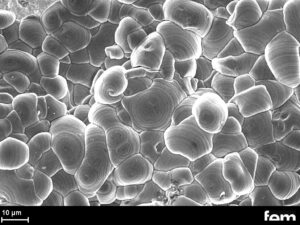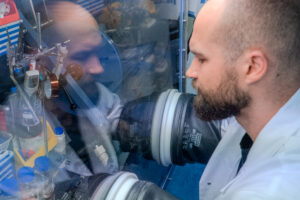The energy transition will only be successful if, in addition to the generation of electricity from renewable energy sources, the development of cost- and resource-efficient energy storage systems is also driven forward. Battery cells with the unique material pairing of calcium and sulphur are a promising candidate for the successor to the lithium-ion batteries currently in use: They reduce Germany's dependence on materials, minimise political, ecological and economic risks and offer enormous technological potential due to their low cost, good availability and high energy density.
Dieses Potential auszuschöpfen ist Ziel des FuE-Projekts “Calcium-Schwefel: Innovative Materialentwicklung für nachhaltigere Batterien”, kurz CaSino. Das Projektkonsortium traf sich in Schwäbisch Gmünd, um erste Forschungsergebnisse zu diskutieren und die nächsten Schritte zu planen. Zu den Forschungspartnern zählen neben dem fem Forschungsinstitut, das für die galvanische Herstellung der Calcium-Anoden zuständig ist, das Karlsruher Institut für Technologie (KIT) (elektrochemische Charakterisierung des Ca-Batterie-Elektrolyten), das Deutsches Zentrum für Luft-und Raumfahrt e.V. (Herstellung der Schwefel-Kathoden), das Helmholtz-Institut an der Universität Ulm (Modellierung der Prozesse in der Calcium-Schwefel-Vollzelle) und das NMI Naturwissenschaftliches und Medizinisches Institut (Grenzflächenmorphologie und Strukturaufklärung). Die EurA AG übernimmt die ökologische Bewertung der einzelnen Batteriekomponenten. Gemeinsam mit den Industriepartnern Alantum, VARTA AG, CustomCells, ACCUREC-Recycling GmbH und IoLiTec Ionic Liquids Technologies GmbH soll bis 2025 ein leistungsfähiger Demonstrator der Calcium-Schwefel-Batteriezelle entstehen.
Further information on the project can be found here.





